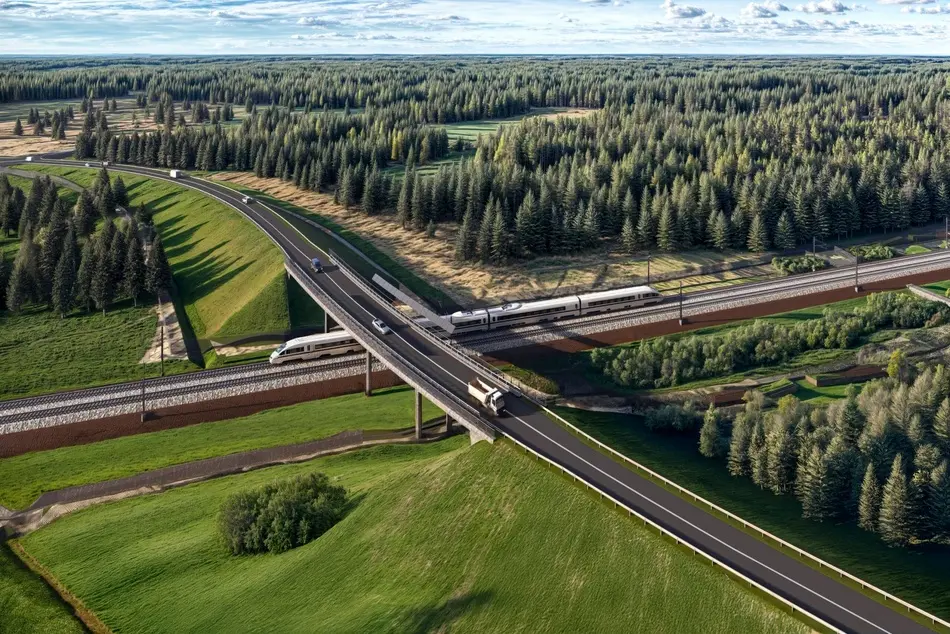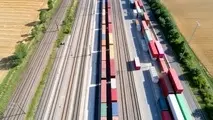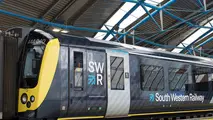Building Resilience Means Strengthening the Old While Designing the New
We therefore need to ensure attention is given to the upkeep of the nation’s vast and ageing networks. Much of our railway system dates back to the 19th century, while most of our roads were laid in the mid-20th century and have since endured volumes of traffic far beyond what was ever anticipated.

Infrastructure investment is set to reach a record high, a welcome sign of confidence in the nation’s future. But behind the headline, assessment is needed as to where that investment is being allocated. Currently, the UK continues to suffer from the consequences of asset owners spending less on renewals and more on life-extending repairs. As a result, we are seeing a forecasted reduction in asset life and increased future risks, according to the Office of Rail and Road.
We therefore need to ensure attention is given to the upkeep of the nation’s vast and ageing networks. Much of our railway system dates back to the 19th century, while most of our roads were laid in the mid-20th century and have since endured volumes of traffic far beyond what was ever anticipated.
Fresh investment in new projects is essential. We need schemes that expand capacity, cut carbon and connect communities. But this must not come at the expense of maintaining and upgrading what already exists, much of which is centuries old.
The answer lies in a whole-system approach. New projects should be designed as extensions of, and reinforcements to, the existing network, maximising value by strengthening both the old and the new. Avoiding a programme of renewal for the sake of ‘savings’ will only be delaying costly repairs for the future.
Taking a life-cycle approach to investment
Infrastructure projects face ever-steeper competition for financial resources. With uncertain availability of capital and cost inflation placing further economic pressure on the sector, maintenance works get pushed to the bottom of the priority list.
High-profile new schemes naturally attract more attention, yet caring for the infrastructure we already rely on is just as critical. All too often, the long-term costs of upkeep are overlooked in budget planning. Network Rail provides a clear example: reduced funding for renewals has left the organisation increasingly dependent on maintenance alone to manage risks. This is neither efficient nor sustainable. A similar pattern is visible on the strategic road network, where the Office of Rail & Road has highlighted constrained maintenance is already reducing asset life and undermining long-term value.
As an industry, we must now lobby for a life-cycle approach to investment – including recognition that underfunding maintenance is a false economy. Only by shifting the focus from reactive maintenance to preventative maintenance will we improve the longevity (and safety) of our transport assets.
Making limited resources work harder with whole-system planning
Carrying out works on portfolios of maintenance rather than individual projects can make our limited resources go further. By thinking holistically, we can optimise our resources – negating the need to make so many hard choices when it comes to infrastructure planning.
National Highways has started to adopt this approach, bundling together infrastructure works to create a more efficient, streamlined process. They have several projects converging on the M42 near Birmingham, where HS2 works are ongoing, and there is an additional scheme at Junction 6. By sharing resources, labour and planning processes, we can do more with less.
Designing for long-term community benefit
We must also begin to measure projects by their impact over time, not only by immediate results. We’re aiming for system-wide resilience – projects that not only fulfil their purpose at the outset but will continue to provide consistent (and reliable) value to the community.
For example, Arup’s work on the Khorezm Roads project in Uzbekistan used a multi-criteria framework to align physical upgrades with wider community benefits, increasing funding as a result. Similarly, the Transpennine Route Upgrade clustered complex rail interventions to deliver meaningful passenger outcomes, rather than relying on disjointed upgrades. Infrastructure developments can, and should, be a win for local communities.
Increasing public trust is a big part of developing mutually beneficial projects. Generally, ageing assets remain invisible until they fail, at which point they get bad press. Increasing public trust (and the probability of future funding) relies on improving how we communicate the necessity of our assets being well-managed and well-maintained. This starts with our industry ensuring our transport assets continue to add community value, no matter the stage in their lifecycle.
Securing an optimistic future
The UK’s transport system is one of our most valuable national assets, yet it is also risks becoming one of the most vulnerable. Record levels of investment will only translate into real progress and future-proofing if we change the way success is defined. That means looking beyond short-term delivery metrics and instead assessing projects by their long-term contribution to reliability, resilience and community benefit.
By embracing whole-system planning and life-cycle investment, we can extend the usefulness of what we already have while ensuring new schemes are designed to complement and strengthen existing networks. Digital tools are an essential part of this shift – predictive analytics and sensor networks to monitor asset health and anticipate failures all have a place in a successful future. This evolution will not only stretch scarce resources further but also build greater public confidence in the value of infrastructure spending.
If we continue to chase only the new, we risk repeating the cycle of neglect. But if we commit to maintaining, adapting and improving what we have, we can create a transport system that genuinely serves people and places for generations to come



